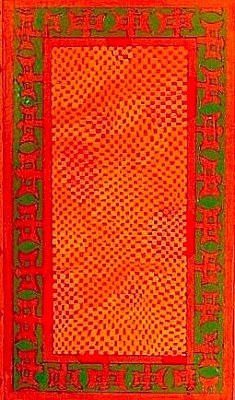GEIST SHMEIST
It is the unique misfortune of David Schoffman, that despite a thriving career as a painter, a monstrously large gambling debt - accrued through an ill advised addiction to martesh, a game of chance involving toothpicks and trigonometry – requires him to carry a near full teaching load. Though he claims to be indifferent to his students’ successes, throughout the years, many of them have gone on to become well known, accomplished artists.
None is more accomplished and well known than Dahlia Danton.
Danton’s large-scale installations have been exhibited in London, Paris, Sao Paolo and New York and have received lavish if not overly extravagant praise. At last fall’s Zagreb International Art Fair, Dahlia’s guitar string sculptures broke the sales record previously set in 2006 by René Boulet. When she showed her paintings at DCA in Los Angeles earlier this year, the entire exhibition was purchased before the opening by the screenwriter Pops LeChess.
I happened to have been in L. A. during the Danton exhibition, peddling my own screenplay, a musical interpretation of the Marquis de Sade’s Le Cure de Prato. (I’m currently contracted to do a second draft for MazeTuck Films). I found Dahlia’s paintings fascinating in their bleak and sovereign subservience to good taste. Adamant in her ambivalence to history, she sees virtue where others see a stubborn lack of originality. The credulity of the market is a popular theme in certain academic circles within the United States. Danton is expert in lyrically conveying this vacuum without recourse to irony or dialectic.
Schoffman can take pride in producing such gifted students, capable of capturing so elegantly the spirit of the age.








